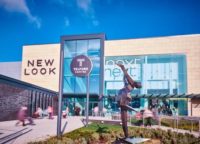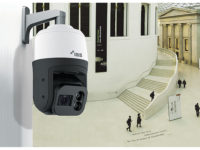It took six years to remodel the interior of the “Palace of Culture,” a monument to socialism built in the 1960s under East German communist rule. Now Bosch is contributing intelligent solutions to make sure that visitors feel safe there, without detracting from its historic charm.
A completely new, state-of-the-art auditorium is the heart of the building. It meets international standards with its striking architecture and top notch acoustics, providing ideal conditions for the Dresden Philharmonic Orchestra and all kinds of other musicians to give concerts. There is also a new municipal library branch, emphasizing the Palace of Culture’s new, open character. Spacious lobbies containing a restaurant and ticket sales link all of the facilities and rooms with one another.
The main auditorium seats 1,700 people, and the building as a whole can accommodate up to 2,800. Crowds like these call for sophisticated security solutions that can be smoothly integrated into the overall design.
“We wanted a cost-effective overall solution that would do justice to the Palace of Culture and its unique architecture,” said Steffen Meyer, the building’s manager. “We published an invitation to bid for the project and of all the applications we received, Bosch convinced us that they were right for the job.”
The building experts from Bosch implemented a customized solution for the Palace of Culture with a host of cleverly integrated components for fire protection, evacuation, access control, video surveillance and building management. The result is a harmonious overall system that meets the entire range of security needs.
“As a public facility where people gather, we have to comply with very strict fire protection rules,” Meyer explained. “We also had to meet some special requirements.” Since the Palace of Culture has protected status as an historic landmark, the appearance of the walls, ceilings and floors may not be noticeably altered. Now virtually invisible smoke detectors preserve the ambiance of the concert hall. Special calculations were even carried out to avoid impairing its acoustics.
Advanced video technology automatically counts visitors to prevent the building’s capacity from being exceeded. Security staff can also tell whether anyone is still in the building, an important piece of information in case it is ever necessary to evacuate it. In critical situations, special speakers powerful enough to be heard over the orchestra or even a rock concert are lowered from the ceiling to make sure that everyone hears important announcements.
All of the individual components are networked via the Building Integration System from Bosch. It makes it easy for the well-trained security guards to monitor and control everything. And to ensure that everything functions reliably in the long term, experts from the Bosch center in Dresden will regularly check and service the system. Meyer stresses that “we don’t want our culture fans to run any risks.”



